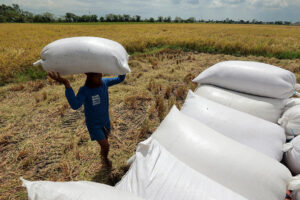THE Department of Agriculture (DA) said it is testing out its farm clustering strategy in Isabela to help scale up the Masagana Rice Industry Development Program (MRIDP).
In a statement, Undersecretary Leocadio S. Sebastian said the clustering effort in Isabela is focused on rice farms tilled by irrigator associations.
He said the DA conducted workshops in Cauayan, Isabela to test the impact of the strategy on clusters of 100 hectares or so, for whose farmers the department will distribute seed, fertilizer, and machinery.
The hope is to produce a successful proof of concept for the dry season planting starting in September. The harvest for such a planting starts in February or March, he said.
At the end of May, President Ferdinand R. Marcos, Jr., who also serves as the Secretary of Agriculture, approved the MRIDP to boost rice self-sufficiency.
The government target is 97.5% rice self-sufficiency by 2028.
The program is the latest incarnation of Masagana 99, launched by President Ferdinand E. Marcos, Sr. in 1973.
Mr. Sebastian, chief implementor of the MRIDP, said rising farmgate prices for palay (unmilled rice) at the end of June are expected to attract farmers to the program.
According to the Philippine Statistics Authority, all regions posted year-on-year growth in farmgate prices for dry palay in May, with Northern Mindanao posting the highest price at P21.26 per kilogram.
Meanwhile, Mr. Sebastian reiterated the government estimate for palay production of 8.605 million metric tons in 2023, which he described as sufficient to meet demand in combination with carry-over stocks and the arrival of imported rice.
“By the end of June, the available stock will be good for more than two months, in addition to the incoming supply from the new harvest and imports,” he said. — Sheldeen Joy Talavera

